When it comes to cars, it's rewarding to pay attention to detail. It means getting every component up to shape to ensure it lasts long. However, in some cases, we need to do things without tools at our disposal. More specifically, in some cases, we'll need to put air in tires without a gauge. If that's what you're wondering how to do, let's find out!
A tire pressure gauge isn't a necessary tool to fill your tires with air. It helps get measurements as precise as possible. But, if you don't have it when the time for pumping your tires with air comes, it's not the end of the world. Still, you might want to measure the pressure in your tires when you can. To fill your tires without a gauge you can:
- Go to your local gas station and drive close enough to the air compressor.
- Make sure the tires are cold before filling them.
- Open the valve caps on the tire.
- Set the pressure level on the machine. If this isn't an option, you'll have to control it yourself.
- Attach the air compressor nozzle against your valve stem.
- Inflate for 5-10 seconds.
- Inspect your tire with an eye or touch test.
- Put the valve caps back on.
Inflating your tires without a gauge is possible, but some details will need clarification. Without a tire pressure gauge, you can't fill your tires with precision. You can get close by using a couple of tests. If you'd like to find this out and more, keep reading ahead.
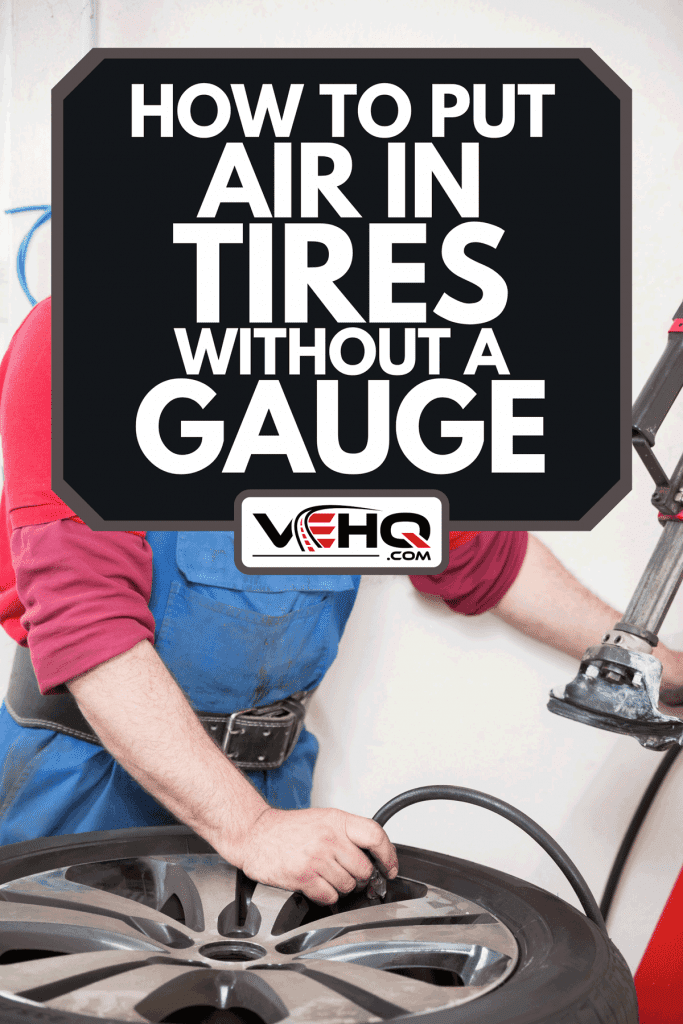
Details To Keep In Mind When Filling Tires
You can follow the steps above to fill your tires as best as you can. However, not all gas stations are the same. Some will have machines that will stop when there's enough pressure in the tire. However, others will have to play a guessing game to know when to stop filling them.
This can be a problem because visual or sensory tests can't guarantee accuracy. But, it can get you close to what you want. As mentioned, you can do a couple of tests when you don't have a gauge with you.
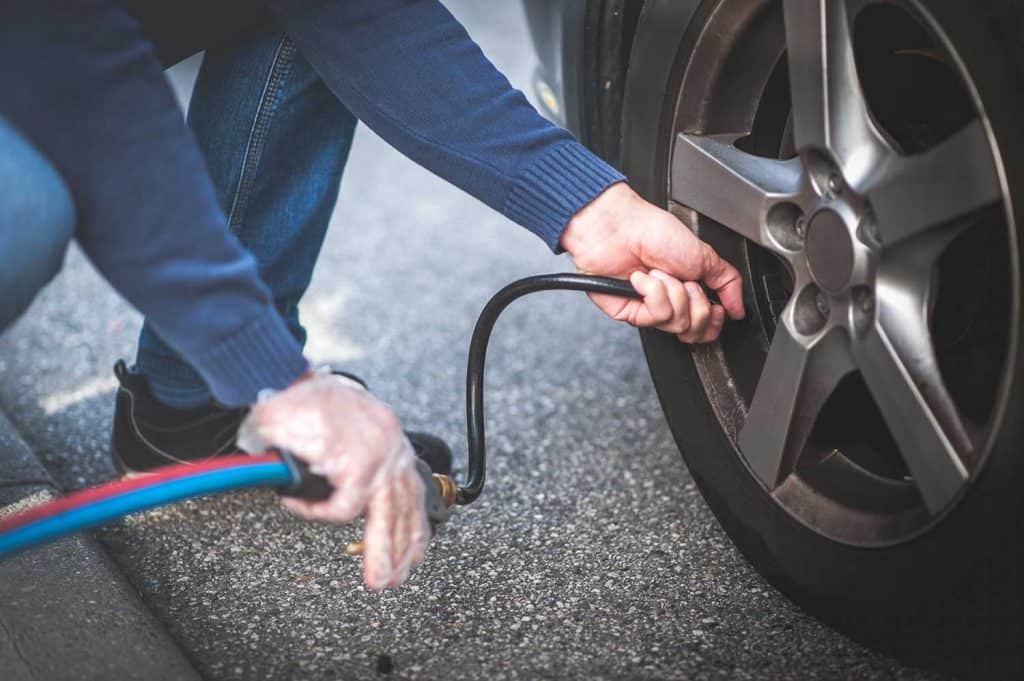
The Visual Test
This method works when your tire is low on pressure. You can perform this test by looking at the form of the tire. If it's protruding from the sides, it indicates low pressure. Once you fill the tires, it will be much harder to identify an overfilled one. So, we'll have to perform another test to get accurate results.
Hand Pressure Test
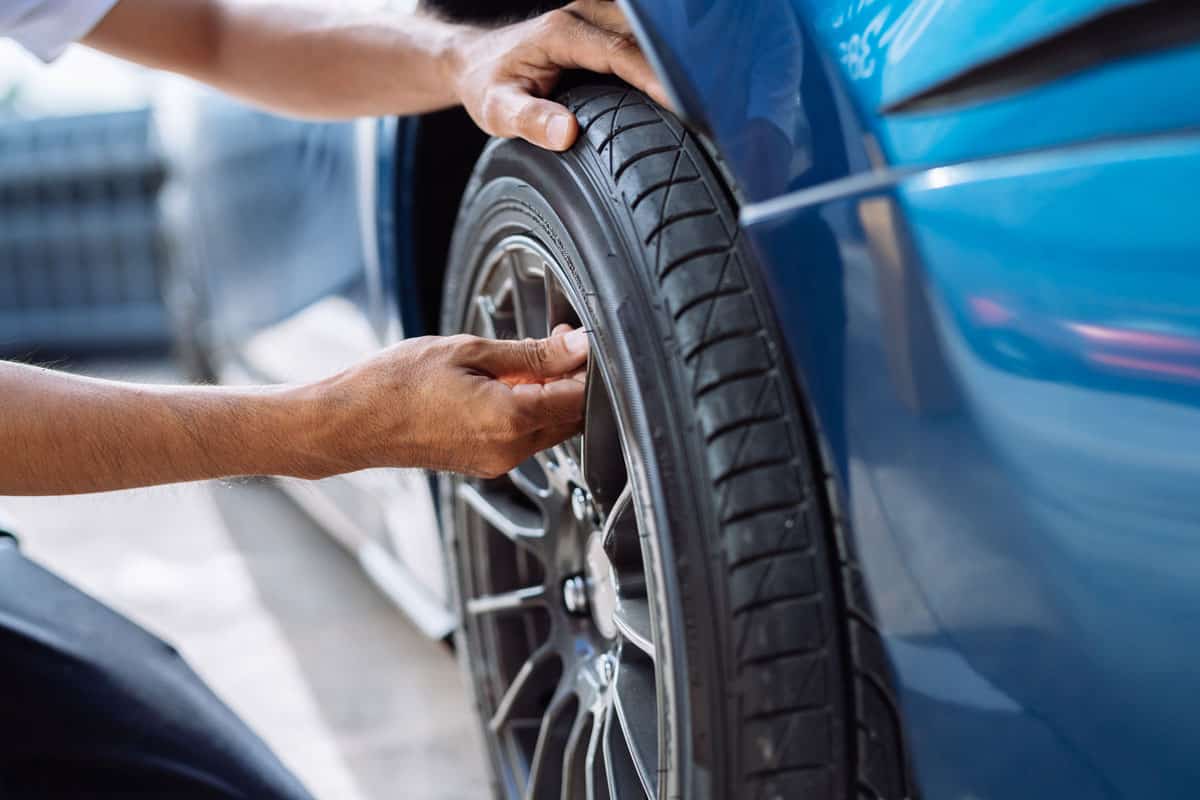
The hand pressure is as its name implies. You're going to put pressure on the tire to check how firm or soft it is. If the tire is soft and squishy, it has low pressure. Once you fill them up, they should be firm.
Using the hand pressure test holds a few problems. The first is you won't be able to tell how inflated the tires are. Still, some suggest that if your tire feels rock hard, it indicates you might have filled it too much.
Manual Tire Compressors
Most gas stations will have a pressure gauge in the machine. In that case, you'll have to inflate the tires to the recommended pressure. Again, you'll have to determine if you've filled the tires enough using one of the tests above. While it isn't the best way to determine how full they are, it'll do the job without a gauge.
Inflate to the Recommended Pressure
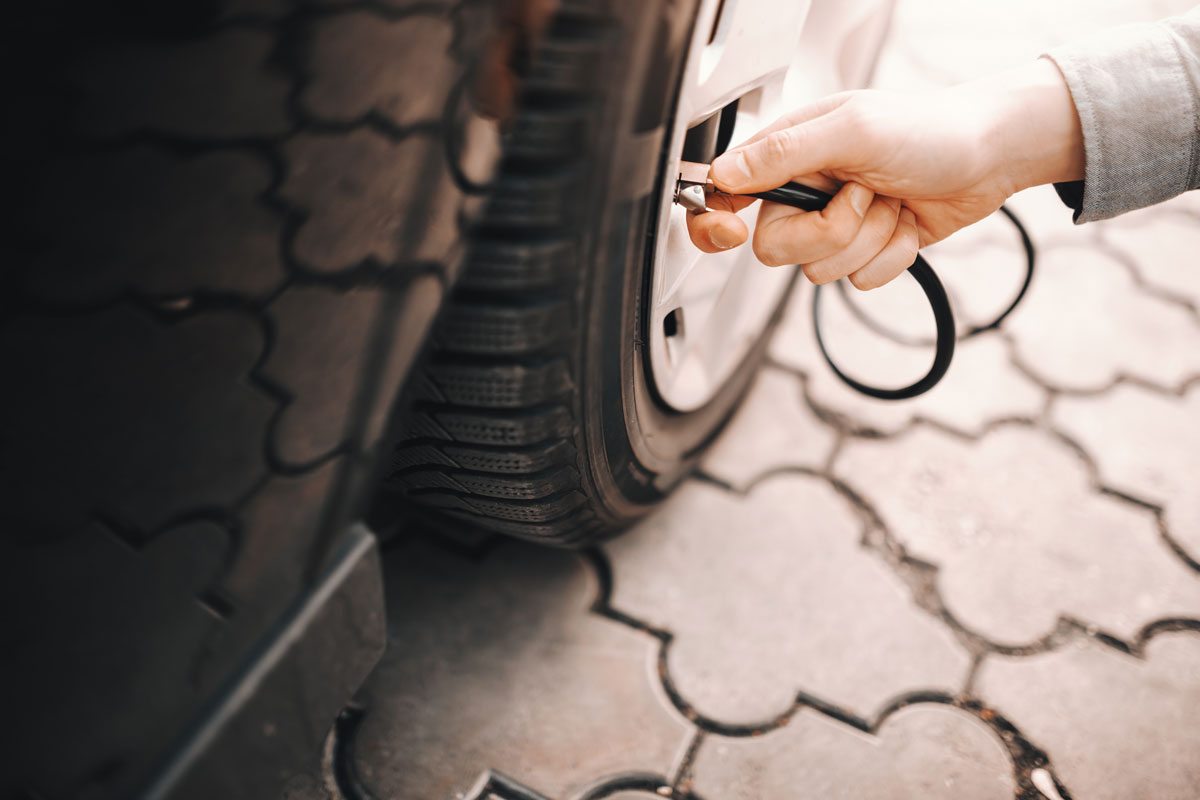
It's important to note that you should only inflate the tire to the operating pressure. This will usually fall lower than the maximum pressure listed on the tire. You can find the operating pressure in the owner's manual or the sticker near the door.
Still, we can get close to these results by using the tests above. If it's soft and squishy, you'll need to inflate the tires. From there, you will have to make sure the tires aren't too firm.
You'll know you have an overfilled tire if your car ride starts feeling irregular. In other words, you'll feel every bump and dip in the road. You might also notice a lack of traction.
Here's a YouTube video explaining the concept between maximum and operating pressure:
Of course, once you have access to a pressure gauge, you'll want to test if you've filled your tires within the operating pressure. As the video suggests, it's fine if you go a bit over the recommended pressure by the manufacturer.
How Do I Know if My Tire Needs Air Without a Gauge?
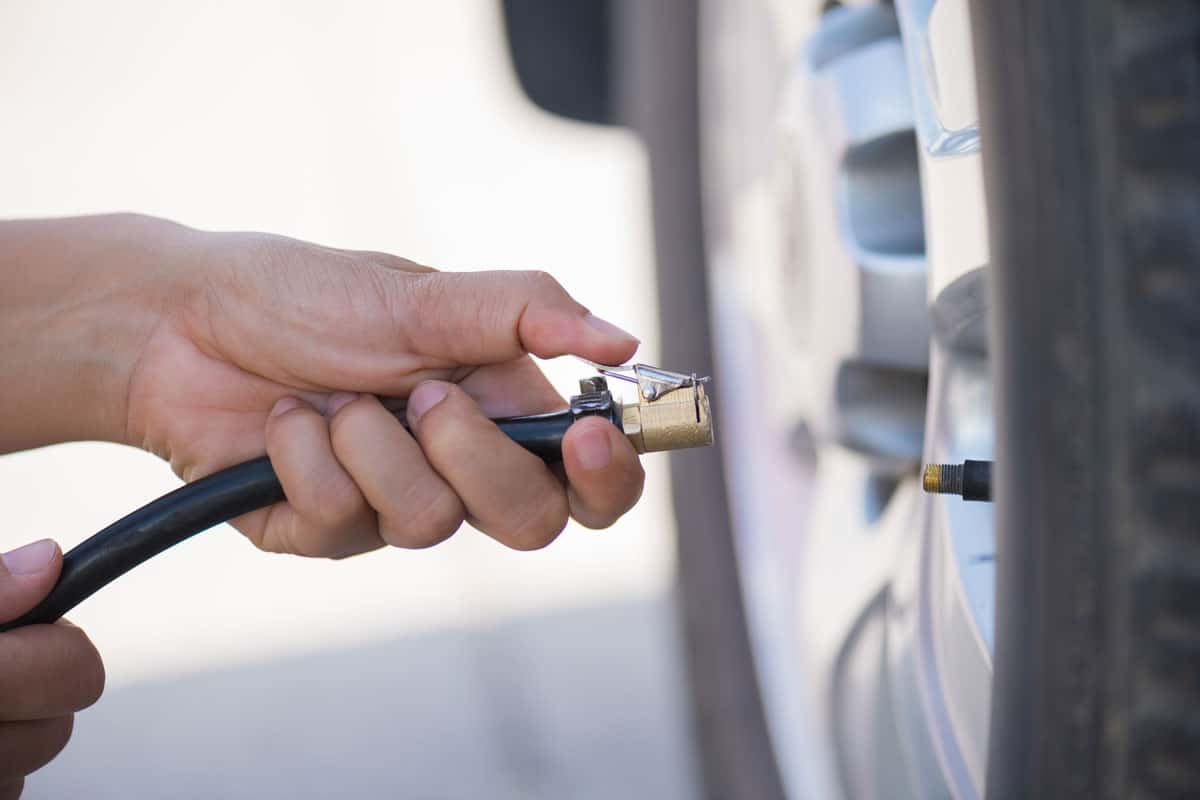
Before we fill the tires with air, we need to know how to tell if it needs filling in the first place. And, sometimes, we'll need to do that without a gauge. You can use the two tests above to determine if you need more air. Still, other methods can tell you if you need to fill your tires.
The other way you can tell is through a cargo check. So, you'll have to load the car with heavy weights while keeping your eye on the sides of the tire. If the sides begin to bulge after adding more weight, it indicates you need to fill the tire with more air.
Can You Drive With Low Tire Pressure?
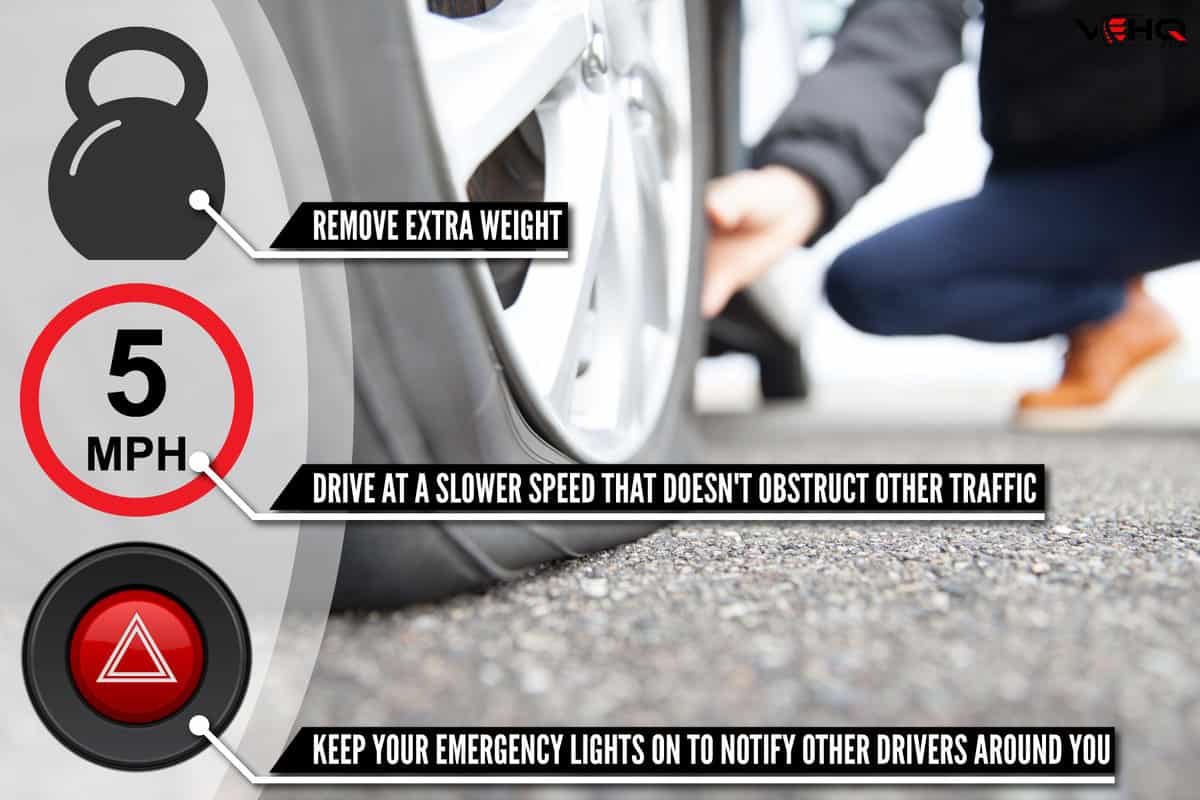
Driving with low tire pressure is possible. But, not recommended. You can get away with it under a couple of circumstances. If weird rides are a recent thing, you can get away with driving with low-pressure tires.
However, there are a few steps you can take to ensure it goes as smoothly as possible. If you must drive with tires with low pressure, you can:
- Remove extra weight
- Drive at a slower speed that doesn't obstruct other traffic
- Keep your emergency lights on to notify other drivers around you
If you'd like to learn more about how to safely drive with low-pressure tires, check out our post here.
Is It Normal for Tires To Lose Pressure?
As some enthusiasts suggest, tires tend to lose 1-2 PSI per month. Still, it depends on several factors. The factors that will determine how much air your tires lose are:
- Number of miles you drive
- Condition of the roads you drive on
- How well of a driver you are
- Unseen damage
Tires need to be in use consistently. So, if you drive more than 20 miles daily, you'd likely lose less pressure. The condition of the roads affects your tires because they will make your tires more susceptible to damage. It damages their structural integrity. As a result, you lose more tire pressure.
How well you drive is also crucial. This means you avoid sudden braking, acceleration, or wheel spinning. If you're more of an aggressive driver, your tires will lose pressure quickly.
Unseen damages are more of an obvious case. If there's an opening in the tire, you'll lose air. It's not as noticeable if the puncture is a tiny hole. Still, it's best if you inspect your tires routinely. This way, you keep them in the best shape possible.
How Do I Put Air in My Tires at a Gas Station?
You can use the guideline at the beginning of the article to fill your tires with air at a gas station. As we mentioned, some gas stations will give you a different experience. So, we'll provide some visual guidance with two videos showing separate kinds of machines.
In the first video, you will have to enter the operating PSI into the machine before filling the tires. Again, you can locate this information on your driver's door on a sticker. Here's the video:
As you can see, the machine beeps once it manages to fill the tire with the correct PSI.
In the other video, we have a person using a nozzle that includes a pressure gauge. It will give you a gauge reading. And you'll have to fill the tire manually. Here's the video:
One important thing to note is that you should not go by the tire's maximum pressure, as the person in the video states. The manufacturer sets the operating pressure, which you can find on a sticker near the driver's door.
Will AutoZone Fill My Tires?
From what we can gather online, AutoZone doesn't have a place where you can inflate your tires. However, they do sell portable air compressors that will allow you to inflate your tires anywhere you'd like.
Why Is My Tire Pressure Light Still On After Filling the Tires?
In some cases, you will notice that the tire pressure light will stay on after inflating your tires. Assuming there's nothing wrong with the structure of the tires, the problem might be coming from the tire pressure monitoring system.
Otherwise, there might be air leaking from one of your tires. In that case, you'll need to repair or replace them.
Final Takeaway
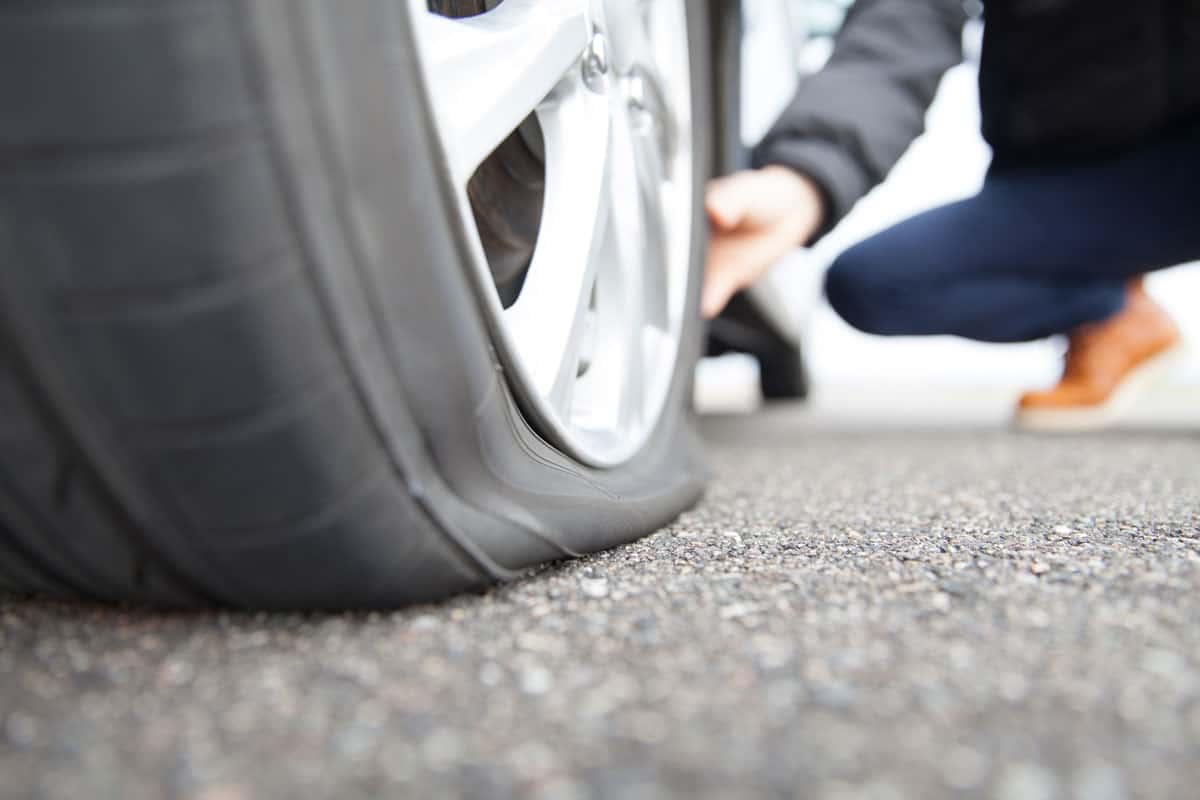
Whether it's your first time inflating tires or working without a gauge, it's important to get it as precise as possible. While a pressure gauge will get us an ideal result, we can work without one in some cases. Regardless, you'll still want to check on them later when you have access to a pressure gauge.
Before you go, do you have other tire concerns? Are you curious if tires should be stored flat or upright? If you'd like to learn more, check out our post here.
Are you also wondering if good tires should be in the front or back? We cover this topic in-depth. If you want to find out more, check out our post here. Safe travels!
